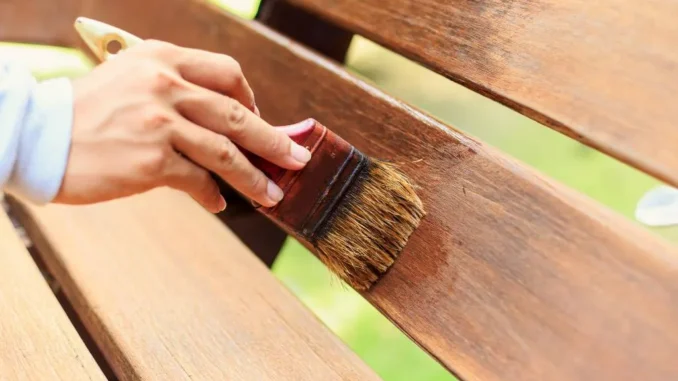
Teak wood has long been recognized for its resilience, beauty, and versatility, making it a top choice for everything from furniture to decking and boat-building. The rich, golden hues of teak are iconic, yet over time, it can lose its luster due to environmental factors like sun exposure, moisture, and wear. As a result, many people ask: Can you stain teak wood? The answer is yes, you absolutely can! However, doing so requires proper preparation and techniques to ensure the wood retains its strength and aesthetic appeal.
Teak is naturally resistant to the elements, but staining can enhance its color, provide additional protection, and restore weathered surfaces. In this article, we’ll explore why you might want to stain teak wood, the right types of stains to use, and how to go about the process. Whether you’re maintaining outdoor furniture or bringing life back to older teak surfaces, learning the proper techniques will make all the difference.
Why Stain Teak Wood?
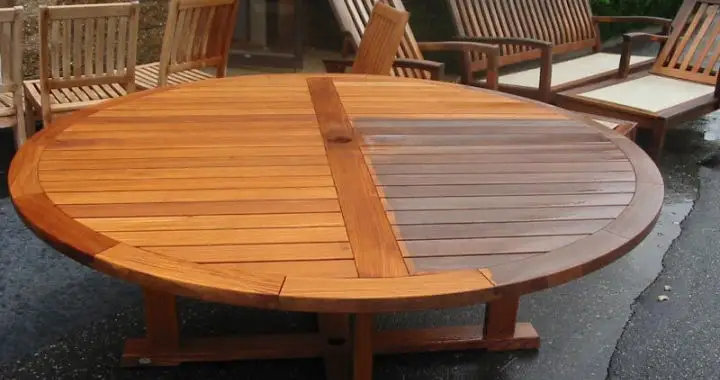
Aesthetic Appeal: Enhance the Look of Your Teak Wood
When it comes to can you stain teak wood, many people’s first concern is how the stain will affect its natural color. Teak is renowned for its beautiful golden-brown tones, which gradually fade to a grayish patina over time. Some homeowners and decorators prefer the weathered, gray look, while others prefer to preserve the wood’s original hue. If you prefer the golden tones of freshly installed teak, can you stain teak wood to maintain that rich appearance? Absolutely.
Staining teak wood can help you achieve the exact look you desire, whether you want to darken the color or enhance its natural depth. The stain adds a layer of protection while transforming the wood to a more vibrant shade. This makes it a popular choice for those looking to customize the look of their teak surfaces and preserve its beauty for years to come.
Added Protection: Shield Your Teak from the Elements
Can you stain teak wood to improve its durability? Yes, staining not only enhances the color of the wood but also provides a protective barrier against moisture, UV rays, and the elements. Teak naturally resists rot and decay, but exposure to rain, wind, and sun can cause it to dry out or crack over time. By staining your teak wood, you can improve its resistance to these elements, ensuring it lasts longer and maintains its beauty.
UV-resistant stains, in particular, help prevent the fading that teak can experience when exposed to direct sunlight for extended periods. Can you stain teak wood to ensure that it won’t lose its golden color? Yes, you can! Staining with UV-resistant products keeps your wood looking fresh and vibrant.
Restoring Older Teak: Bring Back the Natural Luster
Teak, when aged or weathered, can begin to lose its charm. If you’re wondering, can you stain teak wood that’s already weathered or gray? The answer is yes! If your teak furniture, decking, or other surfaces have turned gray and appear worn out, staining can restore their original beauty. The staining process can bring back the golden tones or provide a more intense finish depending on the color you select.
Staining your teak helps rejuvenate its natural appearance and protect it from further deterioration. When the finish begins to fade, you can reapply the stain to restore its original color. Staining is the perfect solution for anyone who wants to breathe new life into older teak furniture, whether it’s indoor pieces or outdoor items.
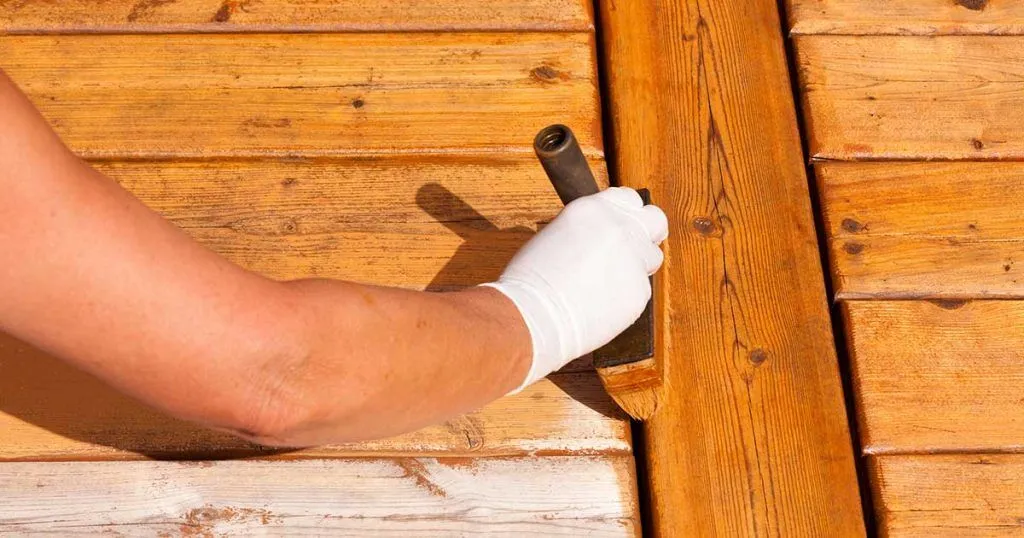
Types of Teak Wood Finishes
Natural Finish vs Staining: What’s the Difference?
If you’ve been wondering, can you stain teak wood to preserve its original look, the natural aging process is something to consider. Over time, teak turns gray due to exposure to UV rays, moisture, and air. Many people appreciate the natural aging process and opt to leave their teak unfinished. However, if you prefer to preserve the wood’s golden hue or deepen its color, staining is an ideal option.
Staining gives you the control to either preserve the natural beauty of the wood or transform it to a more vibrant tone. If you’re undecided and wondering can you stain teak wood to maintain its original color, yes, staining helps you do just that.
Teak Oil: An Alternative to Staining
Some might wonder if they can skip staining altogether and simply apply teak oil instead. Can you stain teak wood if you’ve already oiled it? The answer is yes! While teak oil doesn’t stain the wood, it enhances the natural color and provides a protective layer against water and sun damage. Teak oil is often used for furniture and outdoor pieces that are exposed to the elements. It doesn’t add as much color as a stain does but helps preserve the wood’s natural grain and offers protection from the elements.
Applying oil regularly can help maintain the beauty of teak over time, although it’s not as long-lasting as stains. It’s a more frequent maintenance option, but it does help in retaining the wood’s natural look, which some homeowners prefer. If you’re unsure about staining, you can always choose to apply oil, though some may still wonder, can you stain teak wood after applying oil? The answer is yes, but you may need to remove the oil before staining to ensure the stain adheres properly.
Varnish & Lacquer: Protecting with a High Gloss Finish
While stains add color to teak wood, varnish and lacquer offer more robust protection. Can you stain teak wood after applying a varnish or lacquer? Generally, varnish and lacquer create a solid protective layer that’s resistant to moisture, UV rays, and wear. These finishes don’t affect the color of the wood like stains do but provide a high-gloss finish. For those looking for a shiny, polished look, varnishing or lacquering teak might be a better option than staining.
However, if you prefer the look of a stained teak finish, varnish and lacquer may not be the best choice. In such cases, can you stain teak wood that has been treated with a finish like varnish or lacquer? It’s possible, but you would likely need to sand the surface to remove the glossy layer and ensure proper adhesion of the stain.
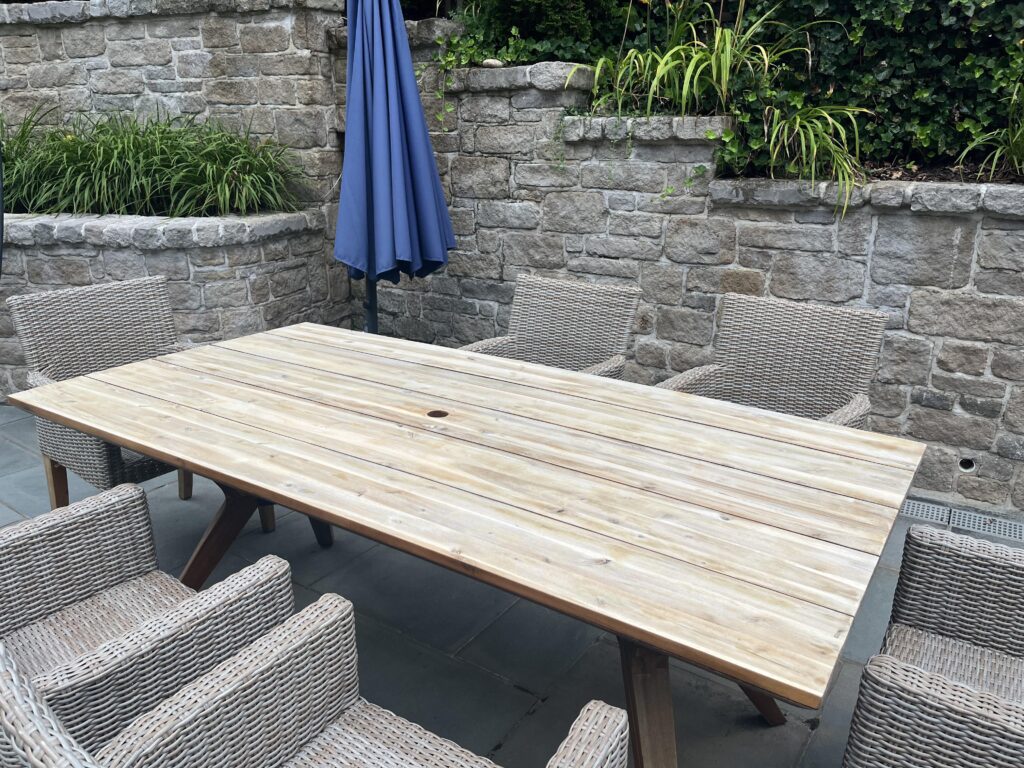
Choosing the Right Stain for Teak Wood
Oil-Based Stains: Best for Teak
If you’re asking yourself, can you stain teak wood with an oil-based stain, the answer is yes! Oil-based stains are a popular choice for teak due to their ability to penetrate deep into the wood. These stains offer a rich, natural-looking finish and enhance the wood’s grain. They also provide excellent protection against moisture and UV rays, making them perfect for outdoor teak furniture.
When you apply an oil-based stain, it soaks into the pores of the wood, creating a durable, long-lasting finish. The result is a beautiful, satin finish that enhances the wood’s natural color. If you’re preparing to stain your teak furniture and wondering, can you stain teak wood using an oil-based product, rest assured that it’s an excellent option.
Water-Based Stains: Clean, Fast, and Eco-Friendly
Some people prefer water-based stains over oil-based ones due to their quick drying times and ease of use. Can you stain teak wood with a water-based stain? Absolutely! Water-based stains are eco-friendly, quick to dry, and easier to clean up. While oil-based stains take longer to dry, water-based options are less prone to discoloring the wood and are more environmentally conscious.
Water-based stains are ideal for those who want a more straightforward process, without the need for heavy ventilation or extended drying times. They also offer excellent UV protection, making them a solid choice for outdoor teak furniture.
Semi-Transparent vs Solid Stains: Finding the Right Finish
When staining teak wood, you also have the option of choosing between semi-transparent and solid stains. Can you stain teak wood with a semi-transparent stain? Yes! Semi-transparent stains are great if you want to showcase the natural grain and texture of the wood, while still providing some color and protection. These stains allow more of the wood’s natural beauty to shine through and are ideal for those who want to preserve the unique characteristics of the teak.
On the other hand, solid stains provide a more opaque finish. Can you stain teak wood with a solid stain if you prefer a more uniform, consistent color? Yes, solid stains work well if you want a stronger color and a more even finish. They also offer better coverage for older, weathered teak that may have discoloration or damage. The main trade-off is that solid stains hide more of the wood’s grain, giving a more painted look.
UV-Resistant Stains: Essential for Outdoor Teak
Teak furniture, especially when used outdoors, is constantly exposed to the sun’s harmful UV rays. This exposure can cause the wood to fade over time. To prevent this, many people choose UV-resistant stains. Can you stain teak wood with a UV-resistant product? Yes, UV-resistant stains are a great choice for teak exposed to outdoor elements. These stains contain special ingredients that block harmful UV rays, helping to preserve the wood’s color and texture.
UV-resistant stains are perfect for teak furniture or decking in sunny areas, as they help protect the wood from discoloration and cracking. If you live in a particularly sunny region and want to preserve the look of your teak, staining with a UV-resistant formula is a must.
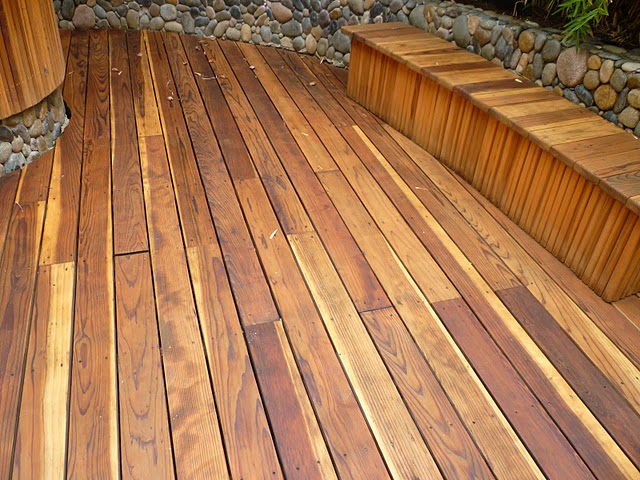
Preparing Teak Wood for Staining
Cleaning: The First Step in Staining Teak
Before you can even think about applying a stain, proper preparation is crucial. One of the most important steps is cleaning the teak wood. Can you stain teak wood that’s covered in dirt, oil, or grime? No, it’s important to ensure the wood is thoroughly cleaned first. If dirt and oil are left on the surface, the stain will not adhere properly, resulting in uneven coloring and finish.
Use a mild cleaner specifically designed for teak wood or a mixture of water and mild soap to remove dirt, dust, and grime. After cleaning, let the wood dry completely before proceeding to the next step. Can you stain teak wood right after cleaning? Yes, but only after it has dried completely to avoid trapping moisture under the stain.
Sanding: Creating a Smooth Surface for Staining
Sanding is an essential step to ensure that your teak wood is smooth and ready for staining. If the teak has an old finish or rough patches, you’ll need to sand it down to create an even surface. Can you stain teak wood without sanding it first? Technically, yes, but sanding is highly recommended for achieving an even and durable finish.
Start with a coarse sandpaper (about 80-grit) to remove any old finish, and then switch to finer grit paper (180-grit or higher) to smooth the surface. This process will help the stain adhere better and give your teak wood a polished look. After sanding, wipe the wood down with a clean cloth to remove any dust or particles before staining.
Conditioning: Preparing the Wood for Stain
Many people ask, can you stain teak wood without using a conditioner? While it’s not strictly necessary, applying a wood conditioner or pre-stain treatment can be beneficial, especially for older or porous teak. A conditioner helps the wood absorb the stain more evenly, preventing blotches or streaks.
To apply the conditioner, simply use a clean cloth or brush to spread it over the teak surface. Allow it to sit for about 15-20 minutes before wiping off any excess. After conditioning, give the teak some time to dry completely before applying the stain.
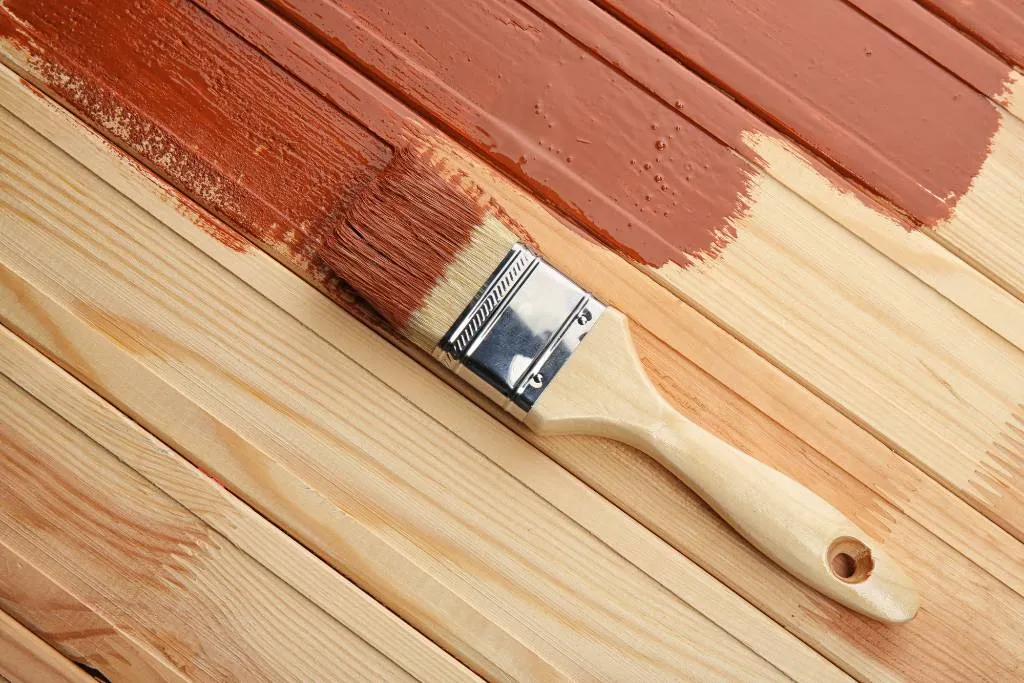
How to Stain Teak Wood
Step-by-Step Guide: Applying the Stain
If you’ve been wondering can you stain teak wood yourself, the process is relatively simple, as long as you follow the right steps. Here’s a step-by-step guide to staining teak:
- Prepare the workspace: Choose a well-ventilated area for staining. Wear protective gloves, a mask, and goggles to protect yourself from fumes and chemicals.
- Clean the teak wood thoroughly as described earlier to remove dirt, oils, and grime.
- Sand the wood to smooth out rough patches and ensure even stain absorption.
- Apply the stain: Use a brush, cloth, or sprayer to apply the stain to the teak. If you’re wondering, can you stain teak wood with a brush or cloth? Yes! Both methods work well, but a brush allows for more precision, especially in hard-to-reach areas.
- Let the stain absorb: After applying the stain, let it sit for about 10-15 minutes to absorb into the wood. If you prefer a deeper color, you can let it sit longer.
- Wipe off excess: After the desired absorption time, wipe off any excess stain with a clean cloth to avoid streaks and blotches.
- Allow the stain to dry: Let the stained teak dry completely before applying a second coat or using the furniture. The drying time will depend on the type of stain and the weather conditions.
Tips for Even Coverage
One common question is, can you stain teak wood without streaking or blotches? To ensure even coverage, always work with the grain of the wood, and don’t apply too much stain at once. It’s better to apply multiple thin coats than one thick coat, as this will reduce the risk of uneven coloration. Make sure to wipe off any excess stain before it dries to avoid unsightly marks.
How Many Coats of Stain?
For most teak applications, one coat of stain is sufficient, but it depends on the depth of color you want. Can you stain teak wood with multiple coats? Yes, if you want a darker or richer finish, applying a second or even third coat can help. Make sure to let the first coat dry completely before adding another layer.
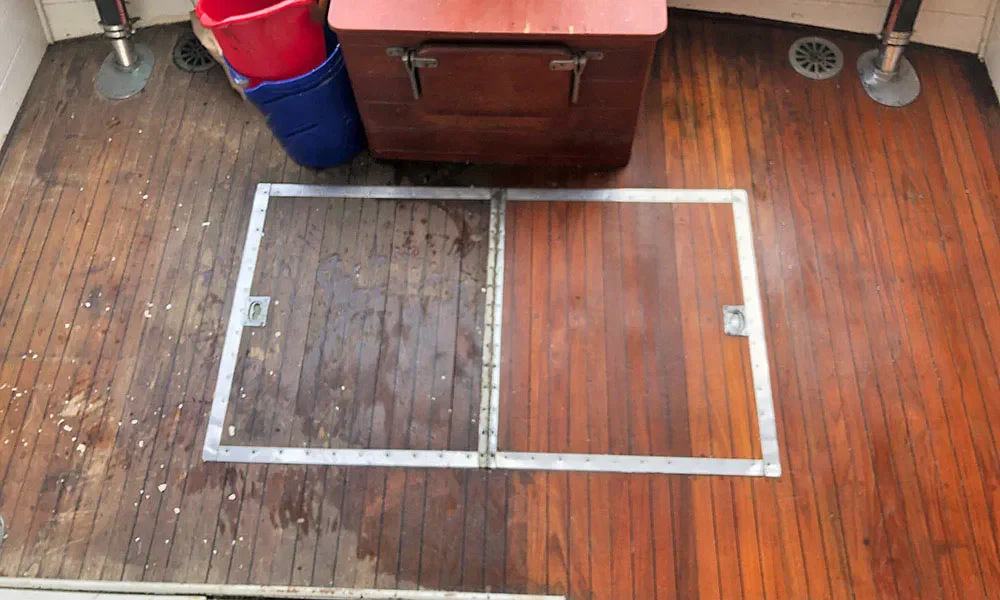
Maintaining Stained Teak Wood
Regular Cleaning: Keeping Stained Teak Beautiful
After staining, it’s important to clean your teak regularly to maintain its appearance. Can you stain teak wood and expect it to stay perfect forever? Not quite. Just like any wood finish, stained teak requires maintenance to keep it looking great. Clean your stained teak surfaces with a mild soap solution and avoid harsh chemicals that might damage the finish.
Re-staining and Touch-ups: When to Reapply Stain
Over time, the stain on your teak may begin to fade due to exposure to the elements. Can you stain teak wood again after the color has worn off? Absolutely! When the stain begins to show signs of wear, re-staining is the best way to refresh and protect the wood. If only certain spots are faded, you can apply touch-ups as needed to restore its uniform appearance.
Protection Against Weathering: Staining Outdoors
For outdoor teak, such as furniture or decking, you’ll need to take additional steps to protect your stained wood from the weather. Can you stain teak wood and expect it to withstand harsh weather conditions? Yes, but you should consider covering your outdoor teak furniture during extreme weather and reapplying stain periodically for extra protection.
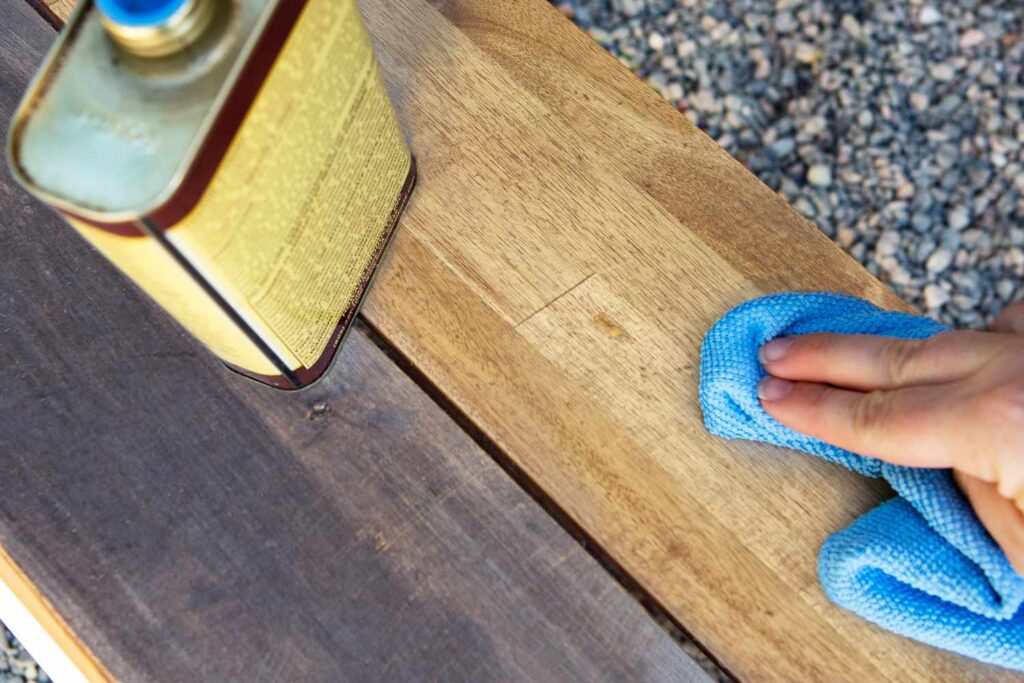
Common Mistakes to Avoid When Staining Teak
Over-Sanding: Avoid Damaging the Wood
One of the most common mistakes when preparing teak for staining is over-sanding. Can you stain teak wood without worrying about damaging it through sanding? You need to be cautious about how much you sand. Sanding too aggressively can damage the wood’s surface, leading to uneven stain absorption or scratches that will show through the finished product. Always start with a coarser grit to remove any existing finish and finish with a finer grit for a smooth surface.
Excessive sanding can also open up the pores of the wood too much, making it overly absorbent and causing the stain to darken in certain areas, leaving an uneven appearance. To avoid this, use a moderate amount of pressure and ensure the wood is sanded evenly across the entire surface.
Applying Stain on Wet Wood: A Recipe for Disaster
Another mistake that many people make when staining teak is applying stain to wet wood. Can you stain teak wood if it’s damp from cleaning or exposure to moisture? The answer is no. Staining wet wood can cause the stain to streak, blotch, or not adhere properly. The moisture interferes with the absorption of the stain, resulting in an uneven or unattractive finish.
Always ensure that the wood is completely dry before applying any stain. If you’ve cleaned the wood before staining, allow it to dry for at least 24 hours, depending on the weather conditions, before moving forward with the staining process.
Choosing the Wrong Stain: It’s More Important Than You Think
Choosing the right type of stain for your teak wood is critical. Can you stain teak wood with any type of stain? Not all stains are suitable for teak, and using the wrong one can lead to undesirable results. Teak wood’s unique qualities require a specific type of stain that can penetrate deeply and provide adequate protection.
For instance, water-based stains might not penetrate as deeply into the dense wood fibers of teak compared to oil-based stains. If you’re working with outdoor teak furniture, it’s important to choose a UV-resistant stain that can withstand the harsh sun and weather conditions.
Not Testing First: The Importance of a Test Spot
Before committing to staining the entire surface, always test the stain on a small, inconspicuous area. Can you stain teak wood and expect the same results everywhere? Not necessarily. Each piece of teak may react slightly differently depending on its age, moisture content, and previous treatments.
Testing a small patch allows you to ensure the color is exactly what you want and that the stain adheres properly. If the test area looks uneven or unsatisfactory, you can make adjustments before applying the stain to the entire piece. Don’t skip this vital step, as it will save you time and frustration later.
Alternative Options to Staining Teak
Teak Oil and Other Alternatives
For those who aren’t sure whether can you stain teak wood is the right choice, there are alternatives. Teak oil is a popular option for those who want to protect their teak wood while maintaining its natural look. Teak oil doesn’t add color like a stain does, but it helps preserve the wood’s rich hues and protects it from water and UV damage.
Teak oil penetrates deeply into the wood, enriching the grain without leaving a heavy coating on the surface. However, it requires frequent reapplication, especially for outdoor teak furniture exposed to the elements. If you prefer a natural look and don’t want the added color that staining offers, applying teak oil could be the best choice.
Sealing Without Staining: Preserving the Original Look
Some people prefer to preserve the natural, weathered patina of their teak furniture or decks. In these cases, sealing without staining may be the right option. Can you stain teak wood without altering its color? You can, but applying a clear sealant instead of a stain will help protect the wood from moisture and UV rays while maintaining its natural appearance.
Clear sealers allow the wood to retain its natural gray patina, making them ideal for those who appreciate the aged look of teak. Sealing the wood without staining still provides a protective layer, but it doesn’t change the color of the wood or enhance the grain the way a stain does.
Preserving the Natural Patina: Keeping Teak’s Aging Grace
For those who love the natural aging process of teak, can you stain teak wood might not be necessary. Some people choose to allow their teak to naturally weather and develop a grayish patina over time. This process is part of what makes teak so unique and beautiful.
Maintaining this natural patina doesn’t require staining, but it does require regular cleaning and occasional oiling to keep the wood protected. If you want to maintain that original gray appearance, it’s important to regularly clean your teak surfaces and apply a light coat of oil when necessary to prevent drying or cracking.
Final Thoughts: Should You Stain Teak Wood?
By now, you should have a clear understanding of can you stain teak wood and the steps involved in the process. Staining teak wood can be an excellent way to enhance its appearance, protect it from the elements, and restore older furniture or decking. However, the key to success is in the preparation and the proper selection of stain type. Whether you choose to apply an oil-based stain for depth, a water-based stain for eco-friendliness, or UV-resistant stain for outdoor durability, make sure to follow the necessary steps and avoid common mistakes.
If you prefer the natural aging process of teak, you can always skip staining altogether and choose to apply teak oil or a clear sealer instead. Ultimately, the decision to stain or not depends on your aesthetic preferences and maintenance needs.
FAQs
Can I stain teak wood if it’s been previously oiled?
Yes, you can stain teak wood that has been oiled, but you’ll need to remove the oil first. This may require sanding the surface or using a solvent to strip the oil before applying the stain. Be sure to follow the proper cleaning process.
How long will a stained teak finish last outdoors?
A stained teak finish can last anywhere from 1 to 3 years, depending on the climate, exposure to sunlight, and the type of stain used. Reapplication may be necessary to maintain the color and protection.
Is it necessary to sand teak wood before staining?
Yes, sanding is highly recommended before staining teak wood to remove old finishes and create a smooth surface for even stain application.
Can I use any stain on teak wood, or are there specific types to look for?
Not all stains are suitable for teak. It’s best to use oil-based or UV-resistant stains designed for dense hardwoods like teak. Water-based stains may not penetrate as effectively.